Women of the Conservatorium: Phyllis M Allinson
Since the 19th century, newly minted, proud university graduates have engaged professional photographers to provide a lasting memento of their academic career. This image from the Rare Music Collection, in its original presentation folder, depicts University of Melbourne graduate Phyllis Allinson upon her graduation from the Conservatorium in 1923. Allinson sports the full Bachelor of Music regalia, including a gown with a black hood, lined with lavender silk and edged with rabbit fur trim, a detail of University regalia that would be abandoned just a few years later in 1927.[1] Allinson’s story is not one of celebrity, but of a musician from rural Victoria, successful in her studies, and in her long career as a professional pianist and teacher, thoroughly immersed in Melbourne’s musical life.[2]
Phyllis M Allinson was born and raised in Rutherglen in Northern Victoria.[3] Daughter of the Headmaster of Rutherglen Higher Elementary School, Allinson was an active member of the local community and performed alongside her sisters in the Rutherglen Philharmonic Society.[4] In 1914, under the tutelage of Miss A Fortune, Allinson undertook Conservatorium Examinations for music theory and the pianoforte.[5] In 1915 she was cited as the top student of the year having achieved honours in both sections.[6]
Allinson began a Bachelor of Music at the University of Melbourne Conservatorium in 1920, taking a supplementary subject called ‘Elementary Acoustics’.[7] It seems likely that it was in this class that Allinson met Constance Ziebell, a talented violinist with whom Allinson would later tour. In the following year Allinson was a member of a Conservatorium Ensemble at the Melbourne Town Hall, performing ‘the most enterprising work of the concert’, a Nocturne by contemporary English composer York Bowen, demonstrating her superior technique and style.[8]
Melbourne Town Hall, hand coloured photograph, Sears’ Studios, 1910 (State Library of Victoria)
In 1923, the final year of her bachelor’s degree, Allinson toured as part of an ensemble with fellow students: vocalist Nellie Lafferty, violinist Constance Ziebell, and cellist John Gough. In a series of recitals across regional Victoria/NSW, the group visited Albury, Ballarat, Numurkah and Shepparton as part of the extremely successful tour organised by then-Assistant Secretary of the Conservatorium Joseph Sutton Crow.[9] The series proved so popular that enthusiastic communities called for the program, and its associated musicians, to return the following year. [10] Allinson’s performances in particular were described by critics as covering ‘a wide field of interpretation and expression of an artistic order’ and she ‘received a large share of the lavish encomiums of the audience’.[11]
One concert venue for the 1923 tour, the Star Theatre, Shepparton, here decorated for a reception, 1933
Numurkah Leader, 23 May 1923
In December 1923, Allinson graduated as a Bachelor of Music alongside Ziebell.[12] Following their graduation, Allinson and Ziebell embarked on an extensive tour of regional Victoria and Tasmania as part of the Chautauqua Season. Chautauqua was an American adult education and social movement that combined culture, education and entertainment through lectures made by leading academics, authors and musical performers. It found its Australian expression through the Australian Chautauqua Association.[13] Since the turn of the century, ‘music became increasingly important at Chautauqua’ and, throughout 1924, Allinson and Ziebell provided the musical accompaniment for lectures delivered by author Dr David Vaughan of Boston University on topics such as ‘Social Service’, ‘Social Unrest,’ ‘Standards of Community Welfare’ and ‘Democracy’.[14] The tour took Allinson and Ziebell to various regional venues, including: the Lyric Theatre, Scottsdale and the Majestic Theatre, Devonport in Tasmania; and in Victoria the Camperdown Mechanics’ Hall; the Lyric Theatre, Shepparton; the Oddfellows Hall, La Trobe Valley; the City Hall, Ballarat; the Town Hall, Horsham; the Warragul Theatre Hall; and the Numurkah Mechanics’ Hall, Goulburn Valley in Victoria.
City Hall, Ballarat, glass lantern slide, John Henry Harvey, n.d. (State Library of Victoria)
Allinson and Ziebell delighted audiences with their musical programme.[15] Their performances consistently met with enthusiasm, applause and encores. As an accompanist and solo pianist, Allinson was lauded by local critics for her ‘skill in technique and expression’.[16] One particularly enthralled reviewer from Shepparton reported, “As a pianiste Miss Allinson is also gifted above the average… her clever fingering and fine interpretation of the music pleased the assemblage who demanded more”. [17]
University Conservatorium staff and students, photograph, [C.J. Frazer?, 1920], (Rare Music, University of Melbourne)
Constance Ziebell, photograph, [Talma, ca 1925] (Rare Music, University of Melbourne)
Allinson remained an active alumna of the Conservatorium, attending gatherings and performing with the Old Students’ Association, organised by Mr Sutton Crow. She was regularly seen at annual Conservatorium openings.[18] Evidence of concert performances by Allinson taper off in the late 1920s. In 1928 she advertised in the Argus for private pupils and, by 1929, was employed as a teacher of pianoforte, harmony and counterpoint at the Conservatorium.[19] She remained at the Conservatorium as a teacher for 27 years, a fitting tenure for such a diligent, conscientious and accomplished Conservatorium alumna as Miss Phyllis M Allinson.[20]
By Caroline Colbran
Rare Music intern
[1] University of Melbourne, University of Melbourne Calendar 1899, p. 206– Library Digitised Collections. The Age, 1927-04-11, p. 14.
[2] University of Melbourne, Rare Music Collection – ‘Photographic portrait of Phyllis M. Allinson’/’Sarony’.
[3] Rutherglen Sun and Chiltern Valley Advertiser – ‘Rutherglen Higher Elementary School’, 1915-12-21, p. 2.
[4] Federal Standard (Chiltern, Vic) – ‘Concert at Chiltern Alley’, 1916-12-08; Rutherglen Sun and Chiltern Valley Advertiser – ‘The Rutherglen Sun and Chiltern Valley Advertiser’, 1917-09-25, p. 2.
[5] Rutherglen Sun and Chiltern Valley Advertiser – ‘University Examinations’, 1914-11-24, p. 2.
[6] Rutherglen Sun and Chiltern Valley Advertiser – ‘University of Melbourne’, 1915-11-30, p. 3.
[7] The Argus – ‘University of Melbourne’, 1921-01-15, p. 17.
[8] The Argus – ‘University Conservatorium’, 1921-11-20, p. 13.
[9] The Albury Banner and Wodonga Express – ‘Melbourne University Conservatorium Recital’, 1923-06-29, p. 4; Shepparton Advertiser – ‘Conservatorium Recital’, 1923-10-18, p. 3.
[10] Shepparton Advertiser – ‘Conservatorium Recitals’, 1923-05-17, p. 5; Numurkah Leader – ‘Advertising’, 1923-05-23, p. 2; The Albury Banner and Wodonga Express – ‘Melbourne University Conservatorium Recitals’, 1923-06-29, p. 4; Shepparton Advertiser – ‘Conservatorium Recital’, 1923-10-18, p. 3.
[11] Shepparton Advertiser – ‘Conservatorium Recital’, 1923-10-18, p. 3.
[12] The Argus – ‘University Commencement’, 1923-04-23, p. 8.
[13] Library of Congress – ‘Traveling Culture: Circuit Chautauqua in the Twentieth Century – Collection Connections – For Teachers’ – Archived 2010-05-28; Gippsland Times – ‘Australian Chautauqua Association’, 1921-11-21, p. 3.
[14] Chautauqua Institution – ‘Our History’.
[15] North-Eastern Advertiser – ‘Chautauqua’, 1924-07-29, p. 2.
[16] Advocate – ‘Amusements’, 1924-08-01, p. 7; North-Eastern Advertiser – ‘Local and General’, 1924-07-25, p. 2; Advocate – ‘Advertising’, 1924-07-26, p. 5; North-Eastern Advertiser – ‘Chautauqua’, 1924-07-29, p. 2; Camperdown Chronicle – ‘Camperdown Chronicle’, 1924-08-05, p. 2; Advocate – ‘Chautauqua’, 1924-08-07, p. 7; Examiner – ‘The North West’, 1924-08-07, p. 2; West Gippsland Gazette – ‘Chautauqua’, 1924-11-09, p. 2.
[17] Shepparton Advertiser – ‘Chautauqua’, 1924-11-15, p. 4.
[18] The Argus – ‘Women of the World – Parties/Meetings’, 1938-03-22, p. 7; The Australasian – ‘Old Students’ Association’, 1926-12-04, p. 57.
[19] Mountain District Free Press – ‘Advertising’, 1953-12-17, p. 9.
[20] Peter Tregear, The Conservatorium of Music, University of Melbourne (Parkville, 1997), p. 153.
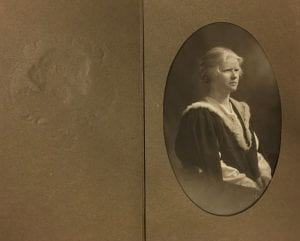
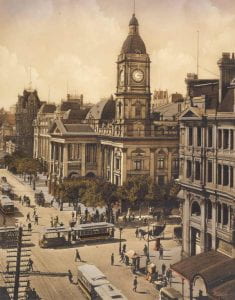
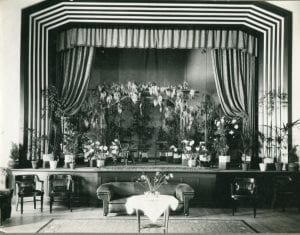
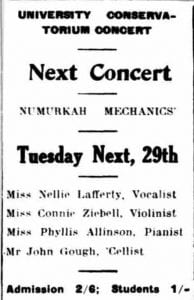
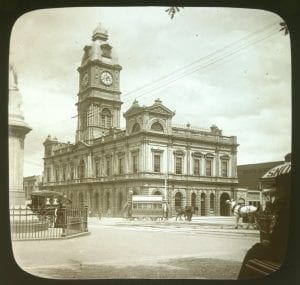
![University Conservatorium staff and students, photograph, [C.J. Frazer?, 1920]](https://blogs.unimelb.edu.au/librarycollections/files/2021/01/PHOT-COSS-UoM-Conservatorium-students-1920-300x169.jpg)
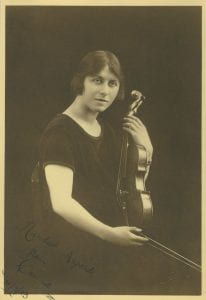
Leave a Reply